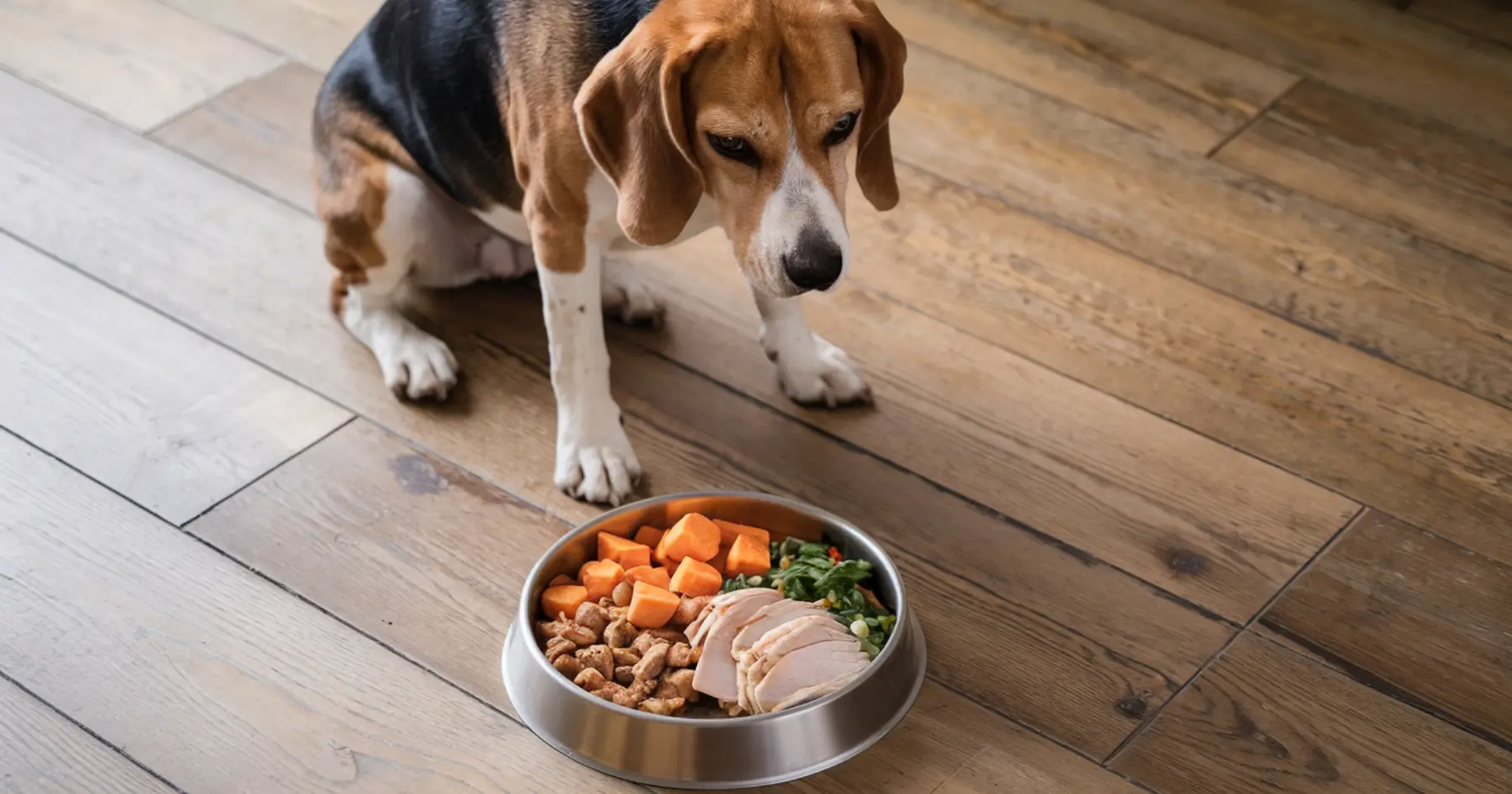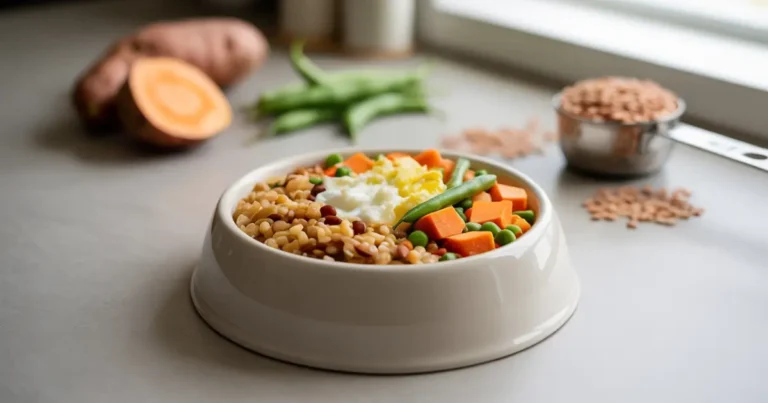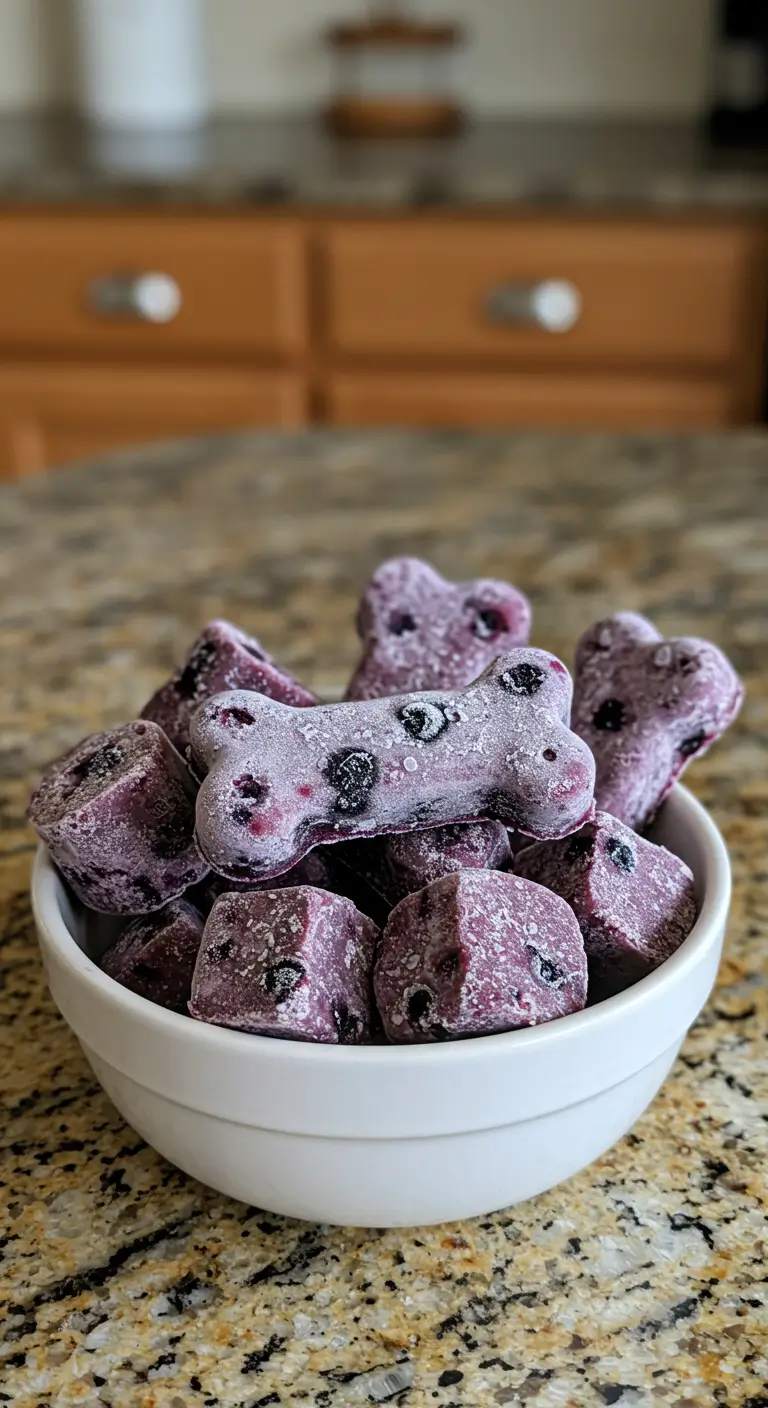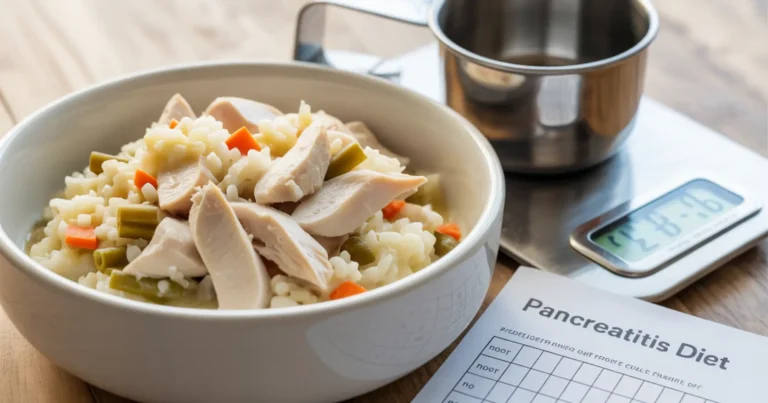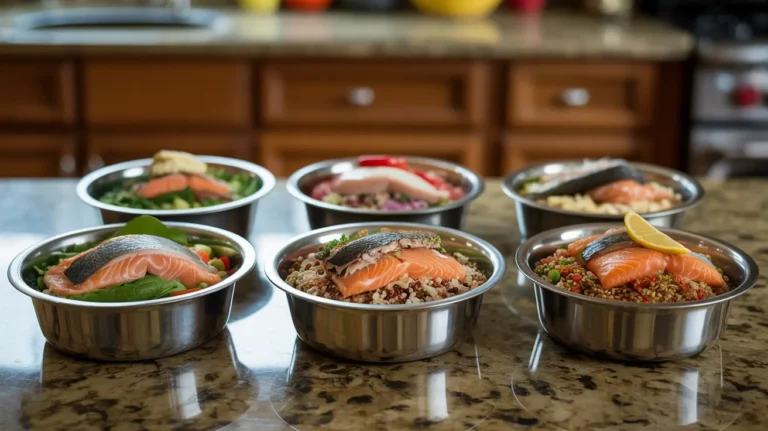Homemade Dog Food Recipes for Allergies: 5 Best Solutions
If you’ve noticed your furry friend constantly scratching, dealing with recurring ear infections, or struggling with digestive issues, food allergies might be the culprit. I’ve been there, watching my dog suffer while trying countless expensive specialty foods, only to see minimal improvement. That’s when I discovered the game-changing world of homemade dog food recipes for allergies.
Making your own allergy-friendly dog food puts you in control of exactly what goes into your pup’s bowl. No more scrutinizing tiny ingredient lists or worrying about hidden allergens – you’ll know precisely what your dog is eating because you made it yourself!
In this guide, I’ll walk you through everything you need to know about identifying allergies, understanding which ingredients work best, and introduce you to five fantastic homemade dog food for allergies recipes that have helped countless dogs find relief. Let’s help your furry friend feel better together!
Table of Contents
Understanding Dog Food Allergies: What’s Really Going On?
Before diving into recipes, it’s super important to understand what’s actually happening when your dog has a food allergy or sensitivity. Unlike humans, who might get sneezy or develop hives immediately after eating something they’re allergic to, dogs often show their food allergies through skin issues and digestive problems that develop over time.

Common Dog Allergic Reaction Symptoms to Watch For
If you’re wondering whether your dog might have food allergies, here are the telltale dog allergic reaction symptoms to look for:
- Skin that is itchy, red, or irritated, particularly in the areas of the face, paws, ears, forelegs, armpits, and abdomen
- Chronic ear infections that keep coming back despite treatment
- Excessive paw licking or chewing until the area becomes sore
- Gastrointestinal problems like vomiting or diarrhea
- Hot spots that seem to appear out of nowhere
- Hair loss or poor coat quality
- Chronic gas or abnormal stools
- Behavioral changes like increased irritability due to discomfort
Many pet parents don’t realize that dog allergic reaction symptoms often develop after months or even years of eating the same food. Your dog might have been fine eating chicken-based kibble for years before suddenly developing an allergy to chicken protein. That’s why identifying the culprit can be so tricky!
Most Common Food Allergens for Dogs
When figuring out what to feed a dog with allergies, it helps to know the most common culprits. While any food ingredient can potentially cause an allergic reaction, these are the usual suspects:
- Beef – Surprisingly, this is one of the most common allergens in commercial dog food
- Dairy products – Many dogs lack sufficient lactase to digest milk products
- Chicken – Despite being in most dog foods, chicken is a frequent allergen
- Wheat/gluten – Though true gluten allergies are less common than the pet food industry suggests
- Egg – Especially the whites, which contain the proteins that typically trigger reactions
- Soy – Found in many commercial foods as a protein booster
- Lamb – Once considered hypoallergenic, it’s now a common ingredient and thus a common allergen
- Fish – Some dogs react to certain fish while tolerating others
- Pork – Less common in dog food, but still an allergen for some pups
- Rabbit – Though relatively rare in commercial foods, some dogs react to it
It’s worth noting that many dogs aren’t allergic to the grain itself but rather to the proteins in the grain. That’s why properly prepared grains can actually be excellent ingredients in homemade dog food for allergies.
The Power of Homemade: Why Cook for Your Allergic Dog?
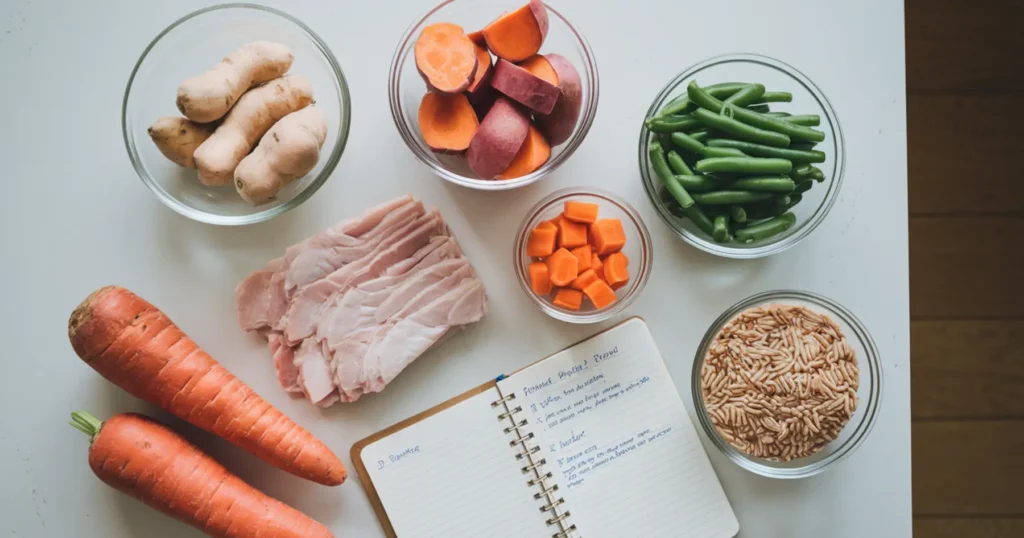
You might be wondering why you should go through the trouble of making homemade dog food recipes for allergies instead of just buying prescription or limited-ingredient commercial foods. Here’s the reality:
Complete Control Over Ingredients
When you make homemade dog food for allergies, you have total control over every single ingredient that goes into your dog’s bowl. No more worrying about:
- Mystery “natural flavors” that don’t specify the source
- Cross-contamination during manufacturing
- Unlisted processing aids or preservatives
- Quality and freshness of ingredients
Cost Effectiveness
While there’s definitely an investment of time, homemade dog food can be more economical than prescription allergy diets, which often cost $80-100+ for a medium-sized bag. When you buy human-grade ingredients in bulk and prepare them efficiently, you can save significantly while providing higher quality nutrition.
Ability to Adjust Based on Response
One of the biggest advantages of homemade food is that you can quickly adjust ingredients based on how your dog responds. Notice your pup still scratching after trying your duck recipe? You can easily swap it out for another protein without buying an entirely new bag of expensive food.
Fresher, More Appealing Food
Let’s be honest – would you rather eat fresh, home-cooked food or dry kibble every day for your entire life? Many dogs with allergies also have decreased appetite due to not feeling well. Homemade food tends to be more palatable and enticing, encouraging proper nutrition when your dog needs it most.
Before You Start: Consulting Your Veterinarian
I can’t stress this enough: before switching to any homemade dog food recipes for allergies, consult your veterinarian. They can help:
- Confirm that allergies are the actual issue (and not something else with similar symptoms)
- Run appropriate tests to identify specific allergens, if possible
- Ensure your homemade recipes will meet all your dog’s nutritional needs
- Recommend supplements if necessary
- Monitor your dog’s progress as you change their diet
Some vets may even refer you to a veterinary nutritionist who specializes in formulating homemade diets for dogs with specific health conditions.
The Elimination Diet: Finding Your Dog’s Triggers

Before diving into specific homemade dog food for allergies recipes, it’s crucial to identify what’s actually causing your dog’s allergic reactions. The gold standard approach is something called an elimination diet, which works like this:
- Choose a single protein and a single carbohydrate that your dog has likely never eaten before (this is where exotic proteins like duck, rabbit, or kangaroo can be helpful)
- Feed only these two ingredients (plus necessary supplements) for 8-12 weeks
- Watch for improvement in allergic symptoms
- Slowly reintroduce one potential allergen at a time, waiting 1-2 weeks between additions
- Note any reactions that occur after reintroducing an ingredient
This process takes patience, but is absolutely worth it to pinpoint exactly what to feed a dog with allergies in your specific situation. It’s the most reliable way to identify your dog’s unique triggers rather than just guessing.
As you work through this process, keeping detailed notes about which homemade dog food recipes for allergies trigger symptoms and which ones help will be invaluable for your long-term management strategy.
5 Powerful Homemade Dog Food Recipes for Allergies
Now, let’s talk about five fantastic recipe approaches that have helped countless dogs find relief from allergies. Each of these can be adapted to your dog’s specific needs once you’ve identified their particular allergens.

Duck and Potato: A True Hypoallergenic Option
Duck is often an excellent choice for dogs with allergies because it’s rarely used in commercial dog foods, making it less likely that your dog has developed an allergy to it. Paired with potato, which is a good carbohydrate source that’s generally well-tolerated, this makes for a fantastic elimination diet recipe.
What makes this approach special:
- Novel protein (duck) that many dogs haven’t been exposed to
- Simple carbohydrate (potato) that’s easily digestible
- Minimal ingredients to reduce potential allergens
- Good balance of protein, fat, and carbohydrates
Duck contains beneficial omega fatty acids that can actually help reduce inflammation and improve skin health – a bonus for allergy-prone pups!
Turkey and Quinoa: Limited Ingredients Approach
For dogs who can tolerate turkey but need a grain-free option, this recipe pairs lean turkey with protein-rich quinoa. Though quinoa is technically a seed rather than a grain, it provides excellent nutrition, including complete proteins and a good balance of amino acids.
This approach works well for dogs with sensitivities to common grains but who don’t have issues with poultry. The limited ingredient philosophy means keeping the recipe simple with just a few well-chosen components, making it easier to identify any problems.
Benefits of this combination:
- Lean protein that’s lower in fat than some alternatives
- Quinoa provides manganese, magnesium, phosphorus, and folate
- Simple preparation methods
- Easily digestible for sensitive stomachs
Salmon and Sweet Potato: Targeted Skin Relief
If your dog’s allergies primarily manifest as skin issues, this omega-rich recipe can be a game-changer. Salmon provides exceptional levels of EPA and DHA – omega-3 fatty acids that have powerful anti-inflammatory properties and can dramatically improve coat and skin health.
Sweet potatoes pair perfectly with salmon, offering:
- Substantial amounts of vitamins A, C, and B6
- Natural fiber for digestive health
- Complex carbohydrates for sustained energy
- Wonderful flavor that most dogs love
This combination has helped many dogs experience significant improvements in coat quality, reduced itching, and fewer hot spots.
Lamb and Rice: Gentle on Sensitive Digestive Systems
For dogs whose allergies affect their digestive systems more than their skin, this soothing recipe focuses on easily digestible ingredients that are gentle on the gut. While lamb was once considered hypoallergenic, it’s become more common in commercial foods, so this option works best for dogs who have been tested and confirmed not to have lamb sensitivities.
The rice component provides:
- Easily digestible carbohydrates
- Binding qualities that can help make loose stools more rigid
- A good source of B vitamins
- Affordable and accessible ingredient
When properly prepared, this combination can help settle digestive issues while providing complete nutrition.
Plant-Based Approach: For Multiple Protein Allergies
Some dogs develop allergies to multiple animal proteins, making feeding them incredibly challenging. For these special cases, a carefully formulated plant-based diet can provide relief while meeting nutritional needs. This approach requires extra attention to protein complementation (combining different plant proteins to ensure all essential amino acids are present).
Key features include:
- Protein from multiple plant sources (legumes, specific grains, etc.)
- Essential fatty acid supplementation
- Careful vitamin and mineral balancing
- Highly digestible ingredients
While dogs are omnivores with a carnivorous bias, those with severe protein allergies can thrive on thoughtfully prepared plant-based diets with proper supplementation and veterinary supervision.
Essential Ingredients to Include in Homemade Dog Food for Allergies
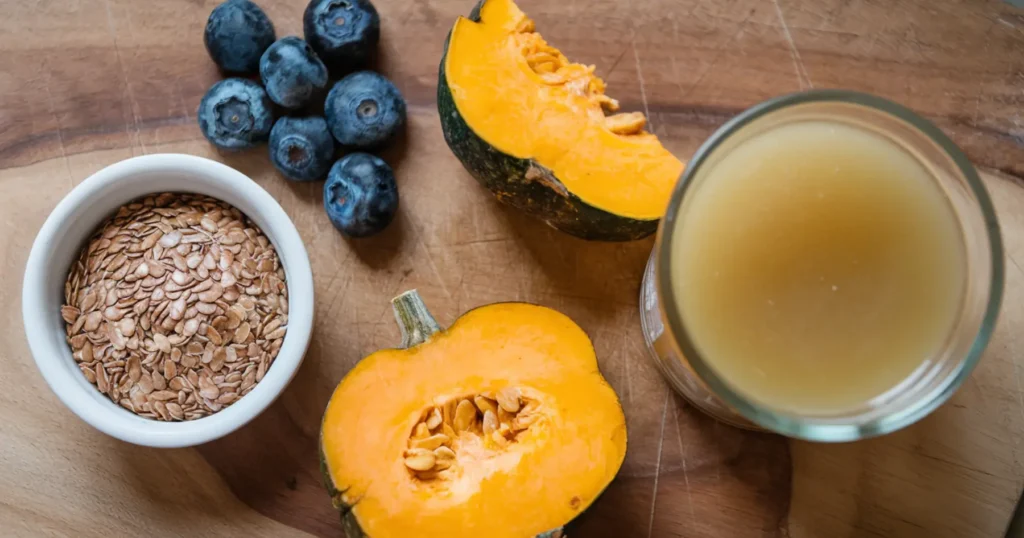
Regardless of which recipe approach you choose, certain ingredients can help support an allergic dog’s healing and overall health:
Omega-3 Fatty Acid Sources
Inflammation is a major component of allergic reactions, and omega-3 fatty acids have natural anti-inflammatory properties. Consider adding (with veterinary approval):
- Fish oil (if fish isn’t an allergen)
- Flaxseed oil (use ground flaxseeds for better nutrient absorption)
- Chia seeds
- Hemp oil
Digestive Support Ingredients
Many allergic dogs have compromised digestive systems that benefit from:
- Pumpkin (plain, not pie filling) for fiber and soothing properties
- Bone broth (made from non-allergenic protein sources) for gut healing
- Small amounts of ginger for digestive comfort
- Probiotics designed specifically for dogs
Antioxidant-Rich Vegetables
When deciding what to feed a dog with allergies, don’t forget to include antioxidant-rich vegetables (provided they’re not allergens for your specific dog):
- Blueberries
- Spinach or kale (in small amounts, properly prepared)
- Carrots
- Broccoli (cooked, in small amounts)
Typical Errors to Avoid When Preparing Homemade Dog Food
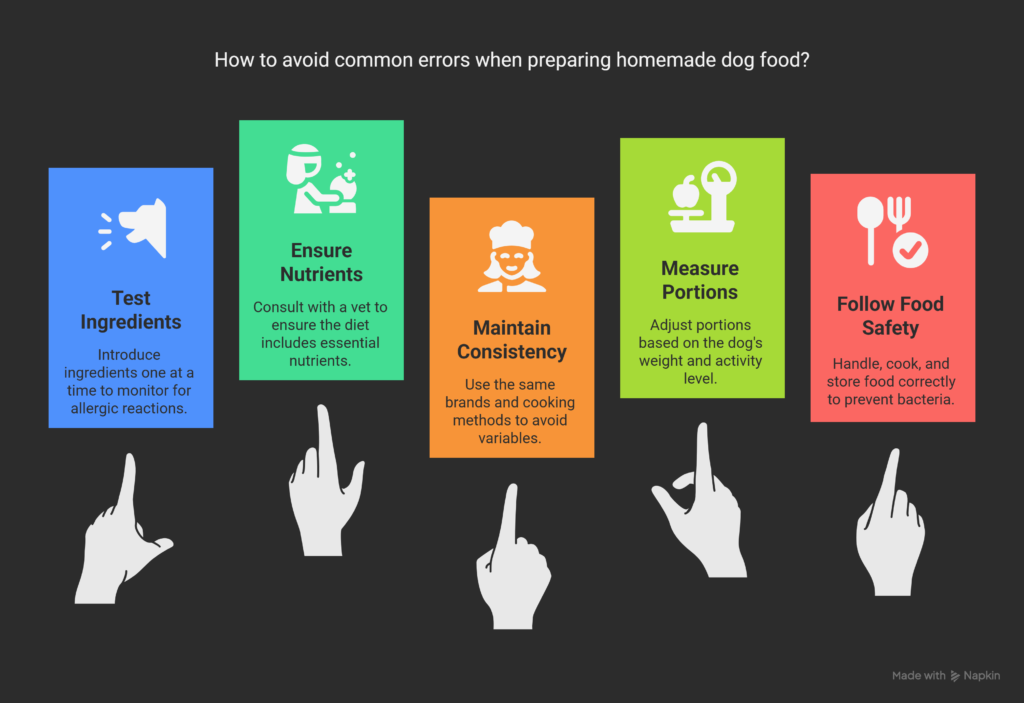
I’ve learned these lessons the hard way, so you don’t have to! Here are the most common pitfalls people encounter when making homemade dog food recipes for allergies:
Using Ingredients Before Testing Tolerance
Even “hypoallergenic” ingredients can cause reactions in some dogs. Introduce new ingredients one at a time and watch carefully for any dog allergic reaction symptoms.
Forgetting Essential Nutrients
Dogs need more than just protein and carbs. Without proper calcium, phosphorus, and essential vitamins, homemade diets can lead to serious deficiencies. Work with your vet to ensure proper supplementation.
Inconsistent Preparation
Consistency is key with allergic dogs. Using different brands of ingredients or cooking methods can introduce variables that make it harder to identify problems.
Not Measuring Portions
Just like humans, dogs can gain weight if portions aren’t controlled. Measure your dog’s food based on their ideal weight and activity level, adjusting as needed.
Neglecting Food Safety
If homemade dog food is not handled, cooked, and stored correctly, it may contain bacteria. As with your own meals, abide by the same food safety regulations.
Transitioning to Homemade Food Safely
When switching to homemade dog food recipes for allergies, a careful transition is essential:
- Start slow: Begin by mixing a small amount (about 25%) of the new homemade food with your dog’s current food
- Increase gradually: Over the course of seven to ten days, gradually raise the percentage of home-cooked meals while lowering the amount of original food.
- Watch closely: Monitor stool consistency, energy levels, and any allergic symptoms
- Adjust as needed: If you notice digestive upset, slow down the transition process
For dogs with severe allergies, your vet might recommend a faster transition or even an immediate switch, but this should only be done under professional guidance.
Supplements Your Allergic Dog May Need
Most homemade dog food recipes for allergies will require some supplementation to ensure complete nutrition:
- Calcium: Essential for bone health (typically from calcium carbonate or bone meal)
- Multivitamin designed for dogs: To fill nutritional gaps
- Omega-3 supplements: For skin health and inflammation reduction
- Digestive enzymes: Particularly helpful for dogs with food sensitivities
- Probiotics: To support gut health, where much of the immune system resides
Your veterinarian can help determine exactly which supplements your specific dog needs based on their health status, the recipe you’re using, and ongoing monitoring of their condition.
How to Know If Your Homemade Diet Is Working

When you’ve been feeding homemade dog food for allergies for a while, you’ll want to evaluate its effectiveness. Look for these positive signs:
- Reduced scratching: This is often the first and most obvious improvement
- Healthier skin and coat: Less redness, better shine, reduced flaking
- Improved ear health: Fewer infections, less head shaking, reduced ear odor
- Better digestion: Formed stools, reduced gas, and less vomiting
- Increased energy: Many allergic dogs feel significantly better overall
- Fewer secondary infections: Less need for antibiotics for skin and ear issues
Most dogs show initial improvements within 4-6 weeks, but complete resolution of chronic symptoms can take 3 months or longer as the body heals.
When to Adjust or Change Your Recipe
Homemade dog food recipes for allergies aren’t a “set it and forget it” solution. You may need to make adjustments if:
- Symptoms don’t improve: This may indicate the recipe still contains an allergen
- New symptoms develop: Your dog might have developed a new sensitivity
- Seasonal changes occur: Some dogs need dietary adjustments based on the season
- Activity levels change: More or less active periods may require recipe modifications
- Age-related needs shift: Senior dogs have different nutritional needs than younger adults
The beauty of preparing your own homemade dog food for allergies is that you can make these adjustments easily without transitioning to an entirely new commercial food. When deciding what to feed a dog with allergies, this flexibility becomes one of your greatest advantages.
Long-Term Management of Food Allergies in Dogs
Successfully managing a dog with food allergies is an ongoing process. Here are some tips for long-term success:
Rotation of Proteins
Some veterinary nutritionists recommend rotating protein sources every few months to help prevent the development of new allergies, provided your dog tolerates multiple proteins. This might mean alternating between your duck recipe and your lamb recipe, for example.
Regular Veterinary Check-ups
Schedule regular check-ups to ensure your homemade diet continues to meet all your dog’s nutritional needs. Bloodwork can help identify any deficiencies before they cause problems.
Food Diary
Keep a food diary documenting:
- Exact ingredients used
- Any treats or supplements given
- Symptom changes (better or worse)
- Environmental factors that might impact allergies
This information is invaluable for spotting patterns and making informed adjustments.
Key Takeaways for Feeding a Dog with Allergies
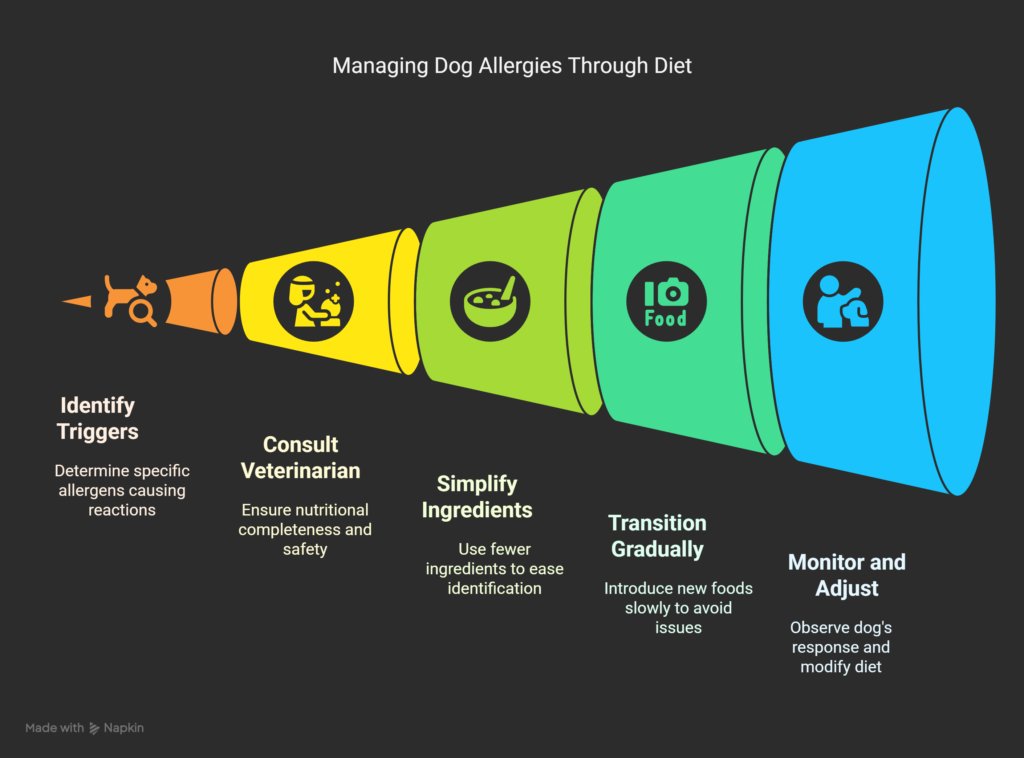
Making homemade dog food for allergies can seem overwhelming at first, but these key points will help you succeed:
- Identify specific triggers through a proper elimination diet
- Work with your veterinarian to ensure nutritional completeness
- Keep ingredients simple to make it easier to identify problems
- Transition gradually to new foods
- Be patient – healing takes time
- Monitor and adjust as needed based on your dog’s response
- Supplement appropriately to fill nutritional gaps
- Keep detailed records of ingredients and reactions
Our 5 Specialized Allergy-Friendly Recipe Approaches
Based on our research and experience helping dogs with various allergies, we’ve developed these specialized recipe approaches that you’ll find detailed in our dedicated articles:
- Hypoallergenic Duck and Potato Dog Food – Perfect for dogs who need a novel protein approach with simple, easily digestible ingredients
- Limited Ingredient Turkey and Quinoa Dog Meal – Great for dogs who can tolerate poultry but need grain alternatives
- Salmon and Sweet Potato Dog Food for Allergies – Ideal for addressing skin issues with powerful omega-3 fatty acids
- Lamb and Rice Dog Food for Sensitive Stomachs – Specially formulated for dogs whose allergies primarily affect their digestive system
- Homemade Vegan Dog Food for Skin Allergies – A unique solution for dogs with multiple protein allergies
Each recipe approach addresses different allergy presentations and sensitivity profiles, giving you options based on your dog’s specific needs.
Conclusion: Taking Control of Your Dog’s Allergies
Food allergies can make life miserable for both dogs and their humans. The constant itching, frequent infections, and digestive issues take a toll on everyone. But by learning to prepare homemade dog food recipes for allergies, you’re taking a huge step toward helping your furry friend feel better.
Keep in mind that each dog is different, so what suits one might not suit another. The journey to finding the right homemade dog food for allergies may take some trial and error, but the results – seeing your dog comfortable in their skin again – make it all worthwhile. Knowing exactly what to feed a dog with allergies is powerful medicine for their health and your peace of mind.
If you’re also dealing with other health conditions like pancreatitis alongside allergies, you might find helpful information in our guide to Homemade Dog Food for Pancreatitis.
Additional Resources for Allergy-Friendly Dog Nutrition
To further your knowledge about what to feed a dog with allergies, check out these valuable resources:
- Tufts University Veterinary Nutrition: Food Allergies
- American Kennel Club
- Cornell University College of Veterinary Medicine
With patience, careful observation, and these targeted homemade recipes, you can help your allergic dog live their best, most comfortable life.
FAQs About Homemade Dog Food for Allergies
Can I feed my dog just meat if they’re allergic to everything else?
No, dogs need more than just meat to thrive. An all-meat diet would be severely deficient in essential nutrients, including calcium, vitamin E, and certain B vitamins. If your dog seems to react to everything, work with a veterinary nutritionist to develop a balanced, rotation-based approach using carefully selected homemade dog food recipes for allergies.
What is the recommended amount of homemade food for a dog?
This varies widely based on your dog’s weight, age, activity level, and metabolism. As a starting point, most adult dogs eat approximately 2-3% of their ideal body weight daily, divided into two meals. For example, a 50-pound dog might eat 1-1.5 pounds of food daily. Monitor your dog’s weight and adjust accordingly.
How do I store homemade dog food?
Refrigerate portions that will be used within 3-4 days in airtight containers. Freeze the rest in individual meal-sized portions for up to 3 months. Never leave homemade dog food for allergies out at room temperature for more than 30 minutes.
What if I don’t have time to cook for my dog every day?
Most pet parents who make homemade dog food recipes for allergies cook in large batches every 1-2 weeks and freeze individual portions. This makes daily feeding as simple as thawing the next day’s meals in the refrigerator overnight.
Is raw feeding better for dogs with allergies?
This is controversial. While some dogs with allergies do well on raw diets, others don’t, and raw feeding comes with additional food safety concerns. The most important factor when figuring out what to feed a dog with allergies isn’t whether the food is raw or cooked, but rather that it excludes your dog’s specific allergens while meeting all nutritional needs.
With patience, careful observation, and these targeted homemade recipes, you can help your allergic dog live their best, most comfortable life.

